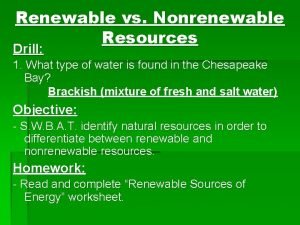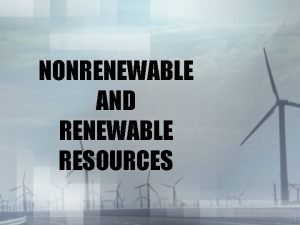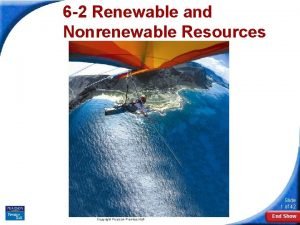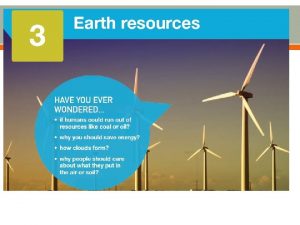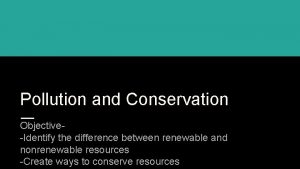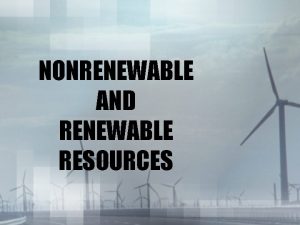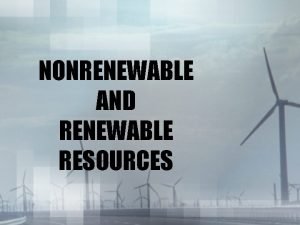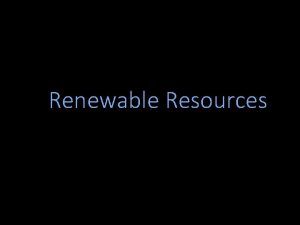Renewable vs Nonrenewable Resources Drill 1 What type

Renewable vs. Nonrenewable Resources Drill: 1. What type of water is found in the Chesapeake Bay? Brackish (mixture of fresh and salt water) Objective: - S. W. B. A. T. identify natural resources in order to differentiate between renewable and nonrenewable resources. Homework: - Read and complete “Renewable Sources of Energy” worksheet.

Renewable vs. Nonrenewable Resources 1. Study the resource cards at your table. 2. Brainstorm with a partner and list the different categories you would use to classify the resource cards. 4. Read the article “Types of Resources”. 5. Complete the graphic organizer and glue in on your student page.

Renewable vs. Nonrenewable Resources 6. Which statement best describes renewable and nonrenewable resources? (Write only the correct statement. ) a. Nonrenewable resources are not as useful as renewable resources because they take millions of years to form. b. Nonrenewable resources can easily be replaced by nature in a reasonable amount of time. c. Metals and minerals are examples of nonrenewable resources. d. Nonrenewable and renewable resources are useful in our daily lives and it is important to use them wisely.

Renewable vs. Nonrenewable Resources 7. Observe the corn oil and the motor oil. Create a graphic organizer on your teacher page to compare and contrast the two. 8. Explain why the corn oil is considered a renewable resource and the motor oil is not. 9. Regroup the cards from activity 2 into two categories. Use information from today’s lesson to develop your categories.

Renewable vs. Nonrenewable Resources Assessment: Refer back to the Chesapeake Bay resource that you chose yesterday, yesterday determine if this resource would be classified as a renewable or nonrenewable resource. Use evidence from the investigation to support your response. Response Options: Ø Written paragraph; labeled diagram or comic strip with conversation bubbles
- Slides: 5
